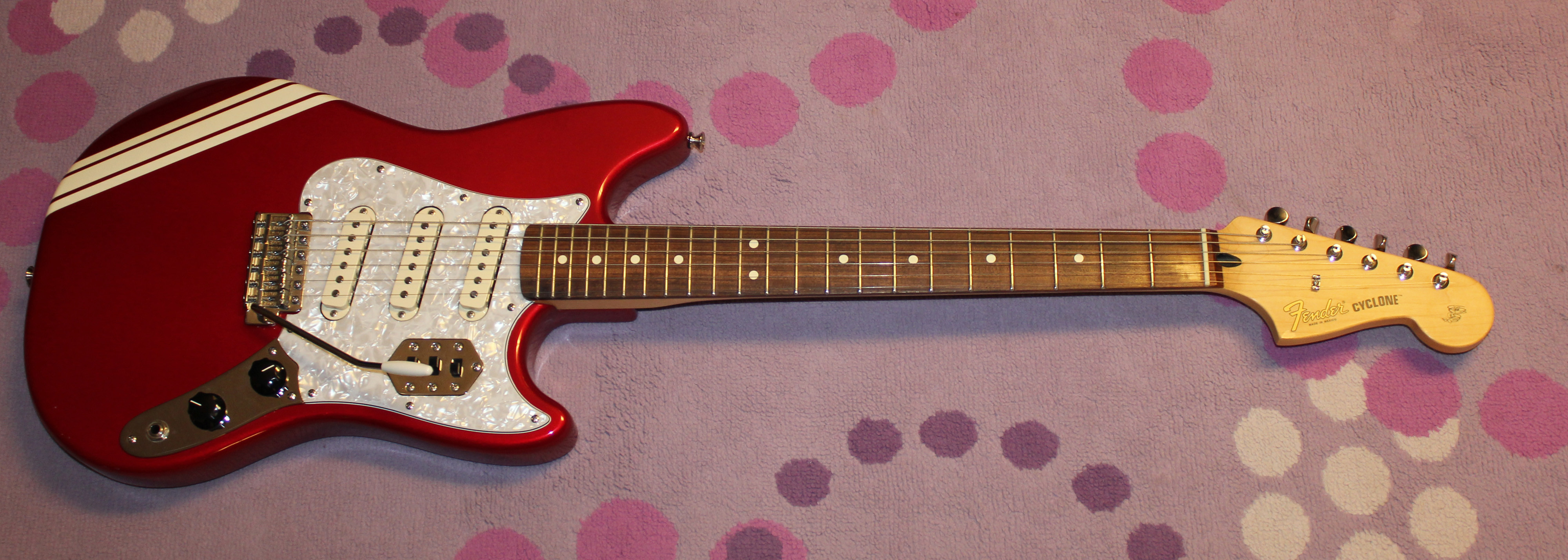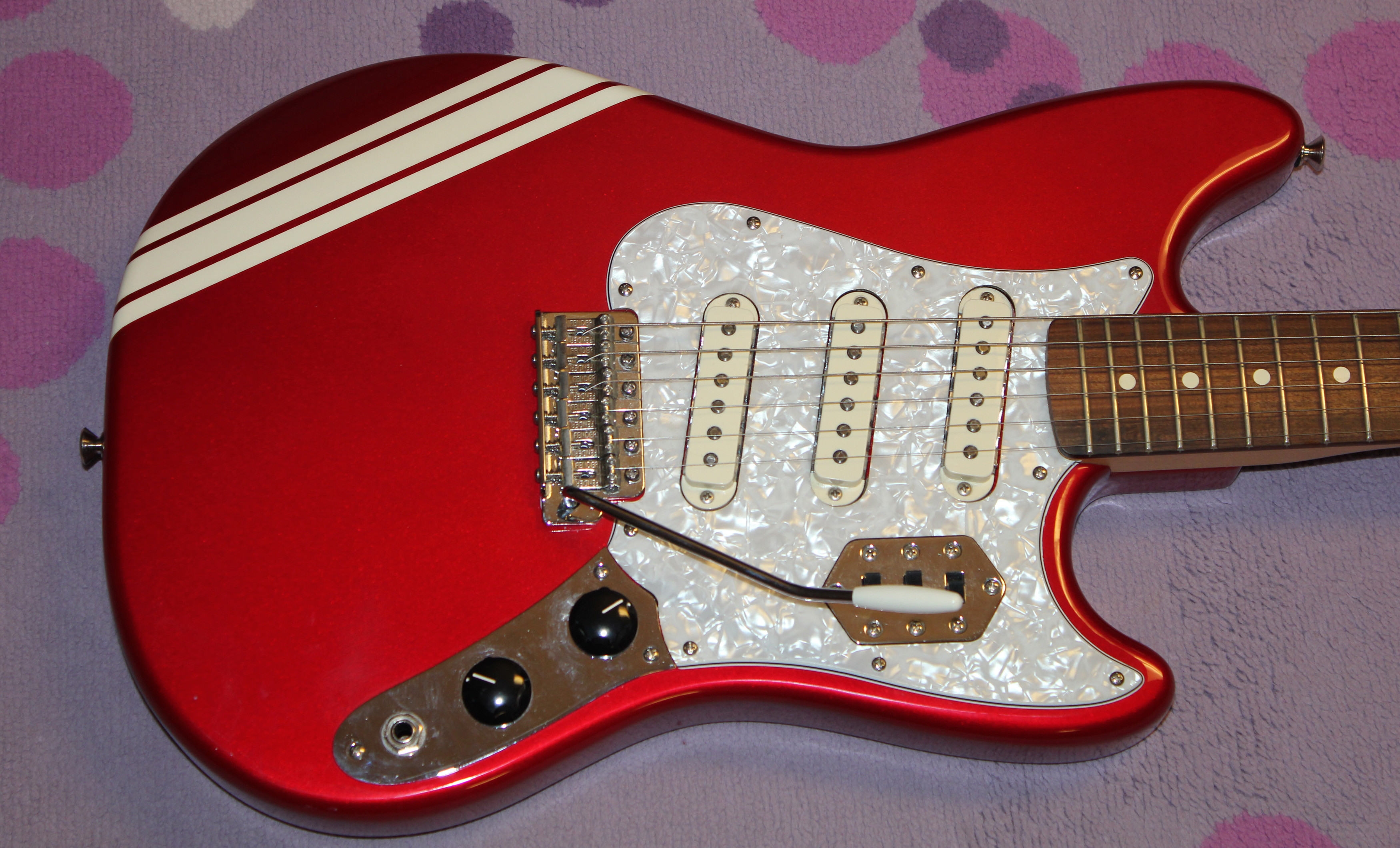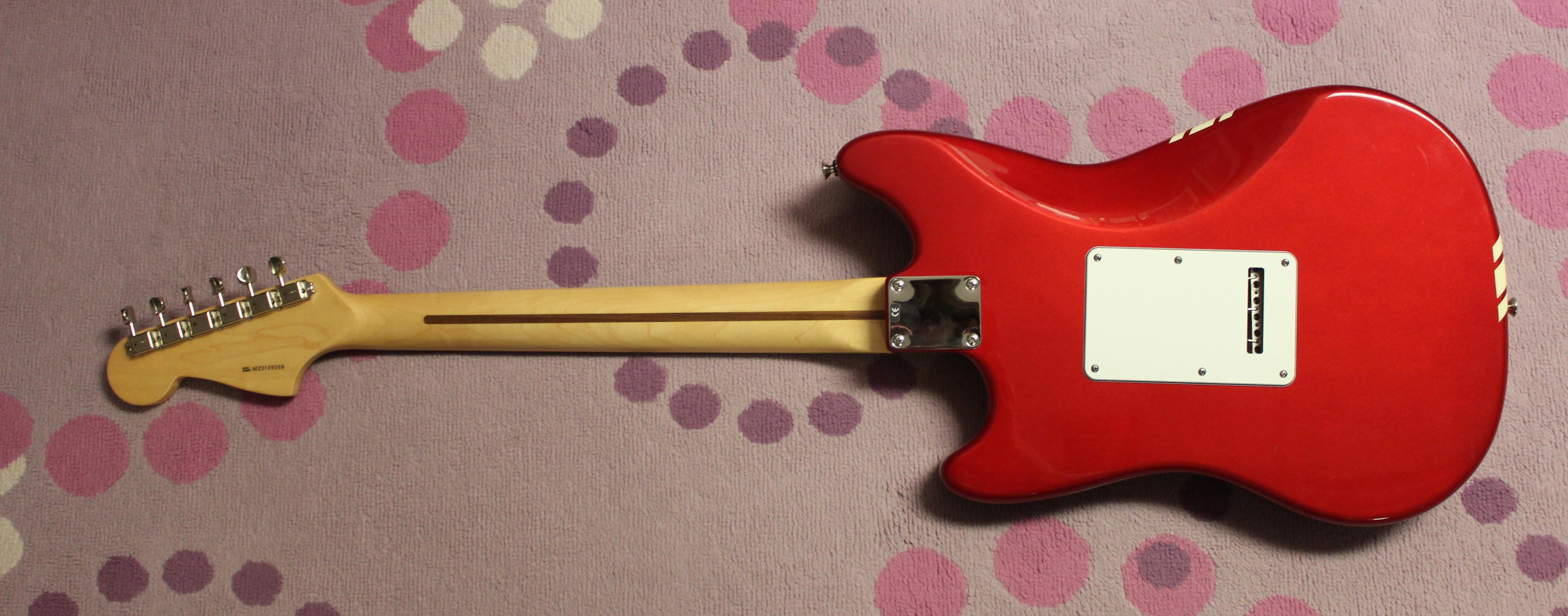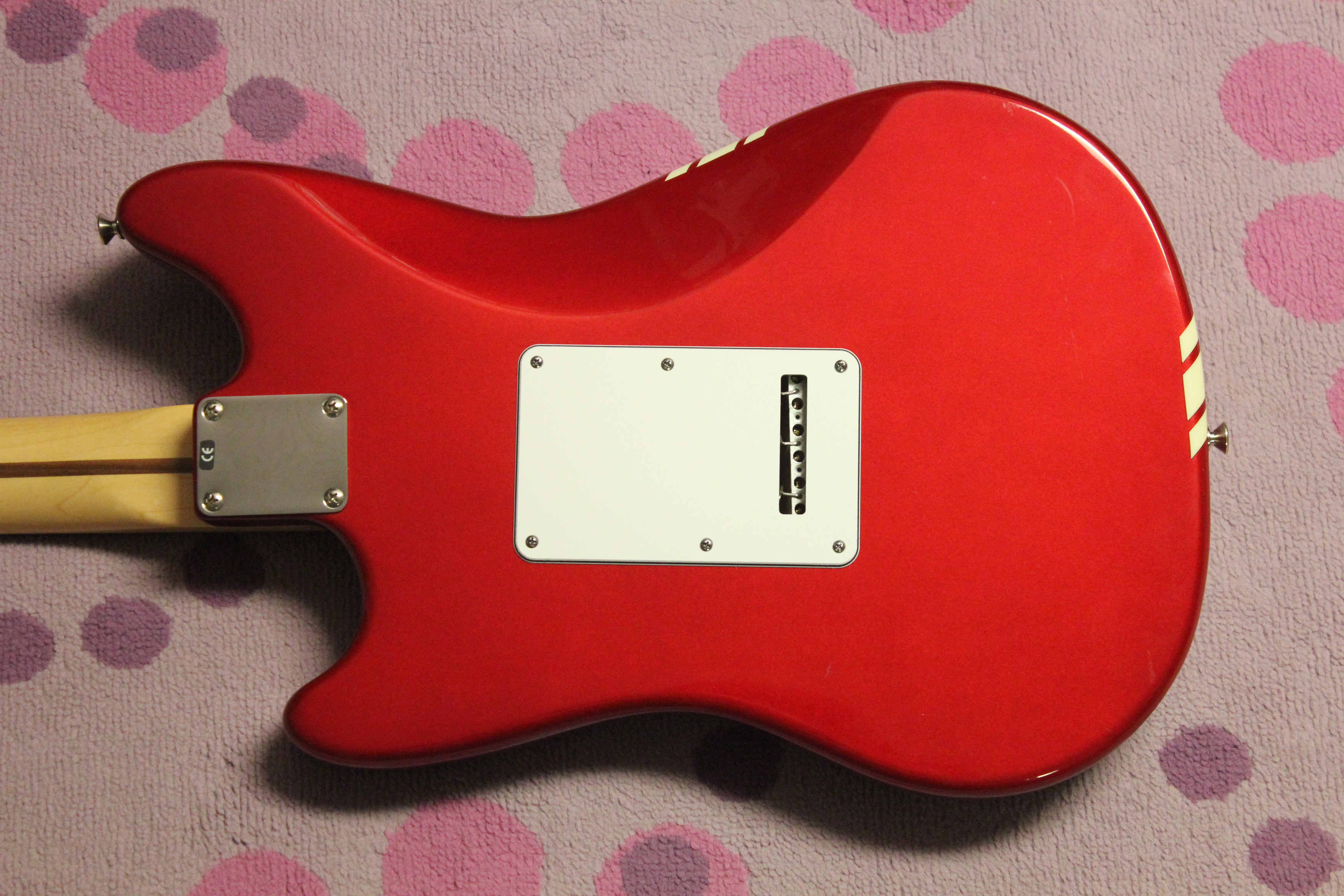The Fender Cyclone Guitar emerged in the early 2000s as a curious and somewhat unconventional addition to Fender’s vast lineup. While it wasn’t a chart-topping success upon its release, the Cyclone has garnered a dedicated following over the years, appreciated for its unique blend of Fender features and distinctive personality. Let’s delve into what makes the Fender Cyclone a noteworthy, if not slightly underappreciated, model in Fender’s history.
 Red Fender Cyclone II electric guitar with racing stripe
Red Fender Cyclone II electric guitar with racing stripe
Design and Features: A Fender Mashup
The Fender Cyclone is essentially a hybrid instrument, drawing inspiration from several classic Fender models. Its most prominent feature is the body shape, reminiscent of the Fender Mustang, albeit slightly more streamlined. This smaller body size contributes to the guitar’s comfortable feel, especially for players who find Stratocasters or Telecasters a bit bulky.
The neck of the Cyclone typically features a shorter 24.75-inch scale length, similar to a Gibson Les Paul or Fender Jaguar/Mustang. This shorter scale makes string bending easier and provides a slightly warmer, rounder tone compared to the standard 25.5-inch Fender scale. The headstock is classic Fender, maintaining brand familiarity.
One of the most distinctive iterations of the Cyclone, the Cyclone II, sported three single-coil pickups reminiscent of Fender Jaguar pickups. These pickups are known for their bright, articulate tone, and in the Cyclone II, they are controlled by individual on/off switches rather than a traditional selector switch. This configuration allows for a wide range of tonal combinations, offering surprising versatility. The tremolo system is a standard Fender synchronized tremolo, similar to what you’d find on a Stratocaster, providing familiar vibrato capabilities.
 Blue Fender Cyclone guitar showcasing body shape and tremolo
Blue Fender Cyclone guitar showcasing body shape and tremolo
Sound and Performance: Punchy and Articulate
The combination of the Jaguar-style pickups and the shorter scale length gives the Fender Cyclone a unique sonic character. The pickups deliver a bright, clear, and punchy tone, well-suited for genres like indie rock, alternative, surf rock, and even punk. The individual pickup switches offer a palette of sounds, from jangly and bright to thicker and more aggressive depending on the combination selected.
Players often describe the Cyclone as having a comfortable and fast neck, thanks to its typically modern “C” shape and often a 9.5-inch radius fretboard. The shorter scale also contributes to ease of playability, particularly for those with smaller hands or a preference for easier string bending. While the original post mentions the guitars feeling “heavy,” body weight can vary between individual instruments depending on the poplar wood density used in the Mexican factory where most Cyclones were produced.
 Close up of Fender Cyclone II pickups and control switches
Close up of Fender Cyclone II pickups and control switches
History and Production: A Limited Run
The Fender Cyclone was introduced in 2002 and remained in production until 2007. Most models were manufactured in Fender’s Ensenada, Mexico factory. There are reports of a very limited number of American-made Cyclones in 2000-2001, preceding the main production run, making these even rarer and more collectible.
Despite its interesting features and Fender pedigree, the Cyclone didn’t achieve mainstream popularity during its initial production run. As mentioned in the original article, sometimes Fender’s more experimental or hybrid designs take time to find their audience. This led to retailers eventually selling them at discounted prices to clear inventory.
Why the Fender Cyclone Appeals to Guitar Players Today
In the years since its discontinuation, the Fender Cyclone has experienced a resurgence in popularity in the used market. Several factors contribute to its current appeal:
- Unique Feature Set: The Cyclone offers a distinctive combination of Fender elements not found in other models. It’s a “best of both worlds” instrument for players who appreciate elements of Mustangs, Jaguars, and Stratocasters.
- Affordability on the Used Market: While prices are rising, used Fender Cyclones are still often more affordable than vintage Mustangs or Jaguars, making them an accessible option for players seeking a quirky Fender with vintage vibes.
- Versatility: The pickup switching system and inherent tonal characteristics make it surprisingly versatile across different genres.
- Cult Following: A dedicated community of players appreciates the Cyclone’s unconventional nature and unique aesthetic, contributing to its growing desirability.
 Fender Cyclone guitar body with racing stripe detail
Fender Cyclone guitar body with racing stripe detail
Conclusion: A Hidden Gem in Fender’s Catalog
The Fender Cyclone guitar, while not a runaway success in its time, stands out as an intriguing and worthwhile instrument in Fender’s history. Its blend of Mustang-inspired body, Jaguar-esque pickups, and Strat-style tremolo creates a unique playing experience and sonic palette. For guitarists seeking something a bit different from the standard Strat or Tele, the Fender Cyclone, especially on the used market, presents a compelling and increasingly sought-after option. If you are looking for a Fender with a twist, the Cyclone might just be the hidden gem you’ve been searching for.
